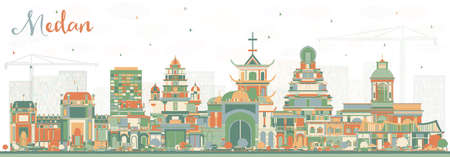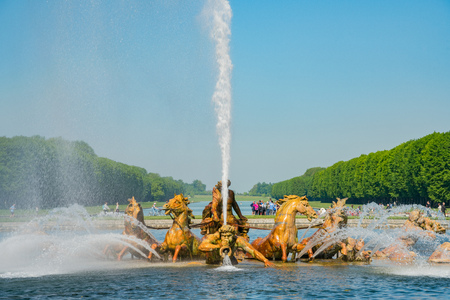Introduction: The Majesty of Green Spaces
From the sweeping lawns of Windsor Great Park to the meticulously designed landscapes of Kensington Gardens, royal gardens and parks have long been intrinsic to the fabric of British society. These verdant spaces are not merely recreational havens but are steeped in layers of historical significance and cultural symbolism. Over centuries, the British monarchy has employed gardens and parks as more than just displays of wealth or taste—they have served as instruments of political power, social order, and even spiritual resonance. The concept of geomancy, or landscape alignment for harmony and fortune, has influenced many royal green spaces, subtly shaping urban planning throughout the ages. Today, these cherished sites continue to provide a sense of continuity and identity in an ever-evolving urban landscape, reflecting the enduring relevance of green spaces in Britain’s collective consciousness.
2. Early Origins: Medieval to Tudor Landscape Ideals
The genesis of royal gardens and parks in Britain is deeply rooted in the medieval period, a time when notions of order, symbolism, and imported influences began to shape the earliest royal landscapes. Far from being mere displays of horticultural prowess, these early gardens were deliberate expressions of power, spirituality, and cosmopolitan aspiration.
Symbolism and Order in Medieval Gardens
Medieval royal gardens were meticulously designed to reflect hierarchical order—a microcosm of the well-ordered kingdom. Enclosures such as the hortus conclusus (enclosed garden) signified both spiritual purity and territorial control. The layout often featured geometric beds, raised walkways, and water features arranged for symmetry and clarity, aligning with the prevailing belief that divine order should be mirrored in earthly realms.
Influence of Imported Ideas
The Crusades and increased trade brought new plants, garden forms, and philosophies from continental Europe and beyond. Italian Renaissance concepts—such as axial alignment and perspective—began infiltrating English design sensibilities during the late medieval period and especially flourished under Tudor patronage. The result was an evolving blend of indigenous traditions with foreign ideals.
Key Features of Early Royal Gardens
| Feature | Medieval Era | Tudor Era |
|---|---|---|
| Layout | Enclosed, geometric compartments | Greater symmetry, axial approaches |
| Symbolism | Biblical & spiritual motifs (e.g., paradise) | Heraldic emblems, dynastic power statements |
| Plant Selection | Native herbs & medicinal plants | Exotic imports (e.g., tulips, roses) |
| Water Features | Pools & simple rills for reflection/utility | Fountains & ornamental ponds for display |
| Cultural Influences | Monastic & feudal models | Italian/French Renaissance inspiration |
The Role of Geomancy in Early Design Principles
While explicit geomancy (the practice of arranging spaces according to mystical principles) was more pronounced in later periods, its seeds were sown early. Garden layouts were often aligned with key buildings or natural features for symbolic effect—echoing beliefs that land could be harnessed for harmony and prosperity. The shaping of landscape thus became a subtle dialogue between practical needs, religious symbolism, and emergent cosmopolitan trends.

3. Geomancy and Design Principles: Laying Out Royal Grounds
Central to the creation of Britain’s royal gardens and parks has been an acute awareness of spatial harmony, informed by principles of geomancy—an ancient art of divining favourable layouts through the observation of natural energies and landforms. While British interpretations of geomancy differ from Eastern traditions like feng shui, the underlying belief in the power of place and orientation has shaped many iconic landscapes. The application of symmetry, axial alignment, and deliberate vistas became hallmarks of royal garden design, particularly evident during the Tudor and Stuart periods. These elements were not merely aesthetic choices; they reflected a worldview where order in nature mirrored divine or regal authority.
Symmetry as Power: The Visual Language of Control
British royal gardens often employ symmetrical layouts, with straight avenues, radiating paths, and balanced planting beds. This commitment to symmetry was a visual statement—projecting control over nature and, by extension, reinforcing the legitimacy of monarchy. Gardens such as those at Hampton Court Palace demonstrate this principle vividly; their geometric parterres and aligned water features create sightlines that direct attention towards the palace itself, asserting its centrality both physically and symbolically.
Alignment with Landscape and Cosmos
Beyond simple geometry, designers considered the broader landscape context when laying out royal grounds. Long vistas were aligned with distant landmarks or natural features—rivers, hills, or ancient trees—connecting the garden to its wider environment. In some instances, alignments were chosen to mark solstices or to frame sunrise and sunset at particular times of year, imbuing these spaces with cosmological significance. Such planning echoed older beliefs in auspicious site selection, where harmony between built form and landscape ensured prosperity and well-being for residents.
Reflecting Societal Values through Spatial Planning
The meticulous planning of royal gardens also revealed prevailing social values. Formal layouts signified stability and hierarchy; enclosed spaces provided privacy for royalty while public promenades demonstrated openness and benevolence towards subjects. Over time, shifts from rigid formality to more ‘natural’ landscapes—such as those championed by Capability Brown—mirrored changing attitudes about humanity’s relationship with nature. Yet even these seemingly informal designs retained subtle geomantic logic: lakes, tree clumps, and rolling lawns were carefully positioned to guide movement and orchestrate views, ensuring that every visitor’s journey through the garden reinforced broader cultural ideals.
4. The Georgian and Victorian Flourish: Parks for the Public Good
The transition from the private grandeur of royal gardens to the public parks of Georgian and Victorian Britain marked a profound cultural and urban shift. The Enlightenment, with its focus on reason and social improvement, coupled with the dramatic changes of the Industrial Revolution, catalysed a new approach to urban green space—one that valued accessibility, health, and civic pride.
Influence of Enlightenment Thought
Enlightenment ideals encouraged city planners and philanthropists to reconsider the purpose of green spaces. Parks were no longer simply the privilege of royalty or aristocracy; they became instruments for public wellbeing. This was evident in how landscapes were designed not just for aesthetic pleasure but also for fostering rational recreation and moral betterment among all classes.
Industrial Revolution: Necessity Meets Inspiration
The rapid urbanisation brought about by industrialisation exposed cities like London, Manchester, and Birmingham to unprecedented crowding, pollution, and health crises. In response, there was a growing consensus that public parks could serve as “the lungs of the city,” offering respite from factory life and improving urban living conditions.
Royal Precedents Shaping Urban Park Design
The transformation of royal grounds into accessible parks set vital precedents. For example, Hyde Park and St James’s Park—once exclusive royal hunting domains—became templates for urban planners seeking to democratise green spaces. These examples reinforced the notion that grand landscapes could be both ornamental and functional for the wider population.
Comparative Overview: Royal vs Public Park Functions
| Aspect | Royal Gardens (Pre-18th Century) | Public Parks (Georgian/Victorian Era) |
|---|---|---|
| Primary Function | Private leisure, prestige | Civic health, recreation |
| User Access | Restricted (royalty/aristocracy) | Open to all citizens |
| Design Philosophy | Geomantic symbolism, formality | Naturalistic layouts, accessibility |
| Cultural Role | Status symbol | Social equaliser, community hub |
This evolution reflected not only shifting attitudes toward nature but also a broader commitment to public welfare. The principles of geomancy—once used to enhance royal authority—were subtly repurposed in Victorian park design to foster harmony and balance within rapidly expanding cities.
5. Contemporary Approaches: Heritage, Ecology, and Community
In contemporary Britain, the stewardship of royal gardens and parks has evolved into a sophisticated balancing act between safeguarding historic landscapes, fostering biodiversity, and maximising public access. These treasured green spaces—such as Kew Gardens, Hyde Park, and the Royal Botanic Garden Edinburgh—are not merely preserved relics; they are dynamic environments that reflect the changing values of society.
Heritage Conservation: Guardianship of Living History
The preservation of royal gardens and parks is guided by rigorous standards rooted in their historical and cultural significance. Restoration projects often involve painstaking research into original design plans and plant lists to maintain authenticity. Organisations like Historic Royal Palaces work in concert with landscape historians, horticulturists, and craftspeople to ensure that every avenue, parterre, and ornamental feature continues to tell its story. This heritage-driven approach preserves not only architectural features but also the deeper narrative of geomantic principles historically embedded in these landscapes.
Biodiversity: Embracing Ecological Resilience
Alongside heritage concerns, there is increasing recognition of the ecological role these spaces play within urban environments. Management strategies now prioritise native planting schemes, pollinator-friendly habitats, and sustainable water management. For example, areas once tightly manicured are being rewilded to encourage greater species diversity—from wildflower meadows supporting bees to ancient trees providing homes for bats and birds. Scientific monitoring guides interventions that enhance ecosystem resilience while respecting the historic character of each site.
Public Accessibility: Fostering Community Engagement
Accessibility has become central to the mission of royal gardens and parks in the twenty-first century. Initiatives such as step-free paths, sensory gardens, inclusive programming for schools, and community gardening projects ensure that these spaces remain welcoming to all. Events ranging from outdoor theatre to educational workshops foster a sense of shared ownership and pride among visitors. By bridging their historic roots with contemporary needs, royal parks serve as democratic green lungs in cities where space is at a premium.
Integrating Tradition and Innovation
The contemporary management of royal gardens and parks thus exemplifies a holistic ethos: conserving heritage while nurturing biodiversity and promoting social inclusion. This integrated approach honours the geomantic wisdom of previous centuries—attuned to energy flows, harmony, and wellbeing—while adapting these principles to address modern environmental challenges and community aspirations.
Looking Ahead
As urban pressures mount and climate change accelerates, the adaptive stewardship seen in Britain’s royal gardens offers a compelling model for cities worldwide. Through careful negotiation between past and present priorities, these iconic landscapes continue to flourish—remaining both guardians of tradition and beacons of progressive urban planning.
6. British Urban Identity: Green Spaces in Modern City Life
The influence of royal gardens and parks extends far beyond their historical or aesthetic value; they are integral to the British urban identity and the everyday lives of city dwellers. Over centuries, these green spaces have evolved from exclusive royal domains to public assets, shaping the character and atmosphere of cities across the United Kingdom. Today, the continued presence and careful integration of these landscapes reflect not just a respect for heritage but also a commitment to well-being and social cohesion.
The Legacy of Royal Parks in Shaping Urban Culture
Royal parks such as Hyde Park, Regent’s Park, and Richmond Park exemplify how geomantic principles once reserved for monarchs now serve the broader public good. These spaces act as communal lungs within dense urban environments, providing residents with vital access to nature. Their design—often rooted in historic landscape planning—creates a unique backdrop for British civic life, supporting everything from major cultural events to daily routines like walking, cycling, or simply relaxing amidst greenery.
Well-being and Social Connectivity
Modern research increasingly confirms what planners have long intuited: regular interaction with green spaces fosters psychological health, reduces stress, and encourages physical activity. Royal parks are particularly influential because of their scale, accessibility, and inclusive ethos. They serve as melting pots for diverse communities, offering a sense of shared ownership and collective pride that strengthens local identity. The tradition of gathering in these parks for festivals or peaceful protest underscores their role in promoting democratic values and social engagement.
Integrating Green Spaces into Contemporary Urban Planning
Inspired by the enduring appeal of royal gardens, contemporary urban planners in Britain prioritise the incorporation of green infrastructure into new developments. Initiatives such as pocket parks, green corridors, and revitalised public squares draw upon historical precedents while addressing modern challenges like environmental sustainability and population density. This ongoing commitment ensures that cities remain liveable and resilient, balancing growth with the preservation of natural beauty.
In essence, royal gardens and parks are more than picturesque relics; they are living embodiments of Britain’s evolving relationship with nature, community, and urban life. Their continued prominence within the cityscape speaks to a national ethos that values both heritage and innovation—ensuring that green spaces remain at the heart of British urban identity for generations to come.


